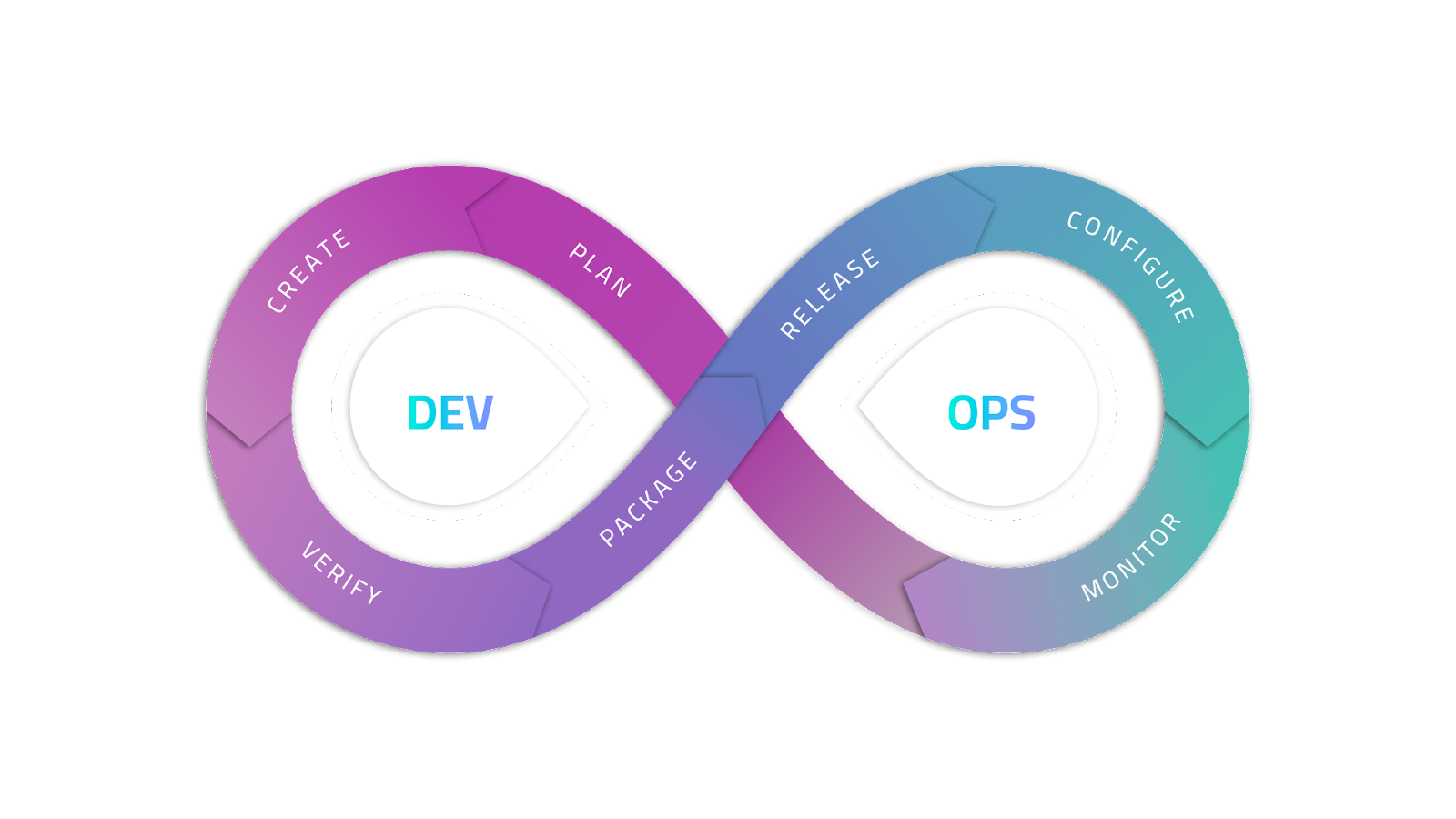
What is DevOps Culture

Requirements analysis, testing, and development are no longer separate processes thanks to agile software development. Testing, deployment, operations, and maintenance have become more isolated from the rest of software development. The DevOps movement promotes cooperation between the two departments, development, and operations by breaking down barriers between them.
New operations technologies and established agile engineering techniques have made DevOps conceivable, but they are not sufficient on their own to enjoy the advantages of DevOps. However, without the correct culture in place, even the most excellent tools in the world won't save you from the failure of your DevOps initiative. And if you wish to know what DevOps Culture is, you're at the right place. In this article, you'll explore the DevOps culture and its pillars. Let's get going!

What Is DevOps?
DevOps is a software development and information technology approach that promotes automation and collaboration as best practices through shared values and behaviors. It emphasizes delegating authority to teams, facilitating group communication, and automating technological processes.
Starting with agile software development, a DevOps methodology deepens the cross-functional approach to rapidly developing and releasing products. When you choose a DevOps methodology, you select a more collaborative atmosphere across the board, ultimately leading to better application flow and value delivery.
DevOps is an approach that prioritizes continuous integration and delivery by drawing on agile and lean methodologies and systems thinking. Establishing a shared sense of responsibility, empathy, and higher levels of teamwork is crucial to the success of any firm.
What Is DevOps Culture?

DevOps culture refers to the set of values, practices, and behaviors that are followed by organizations that are committed to a collaborative and agile approach to software development and delivery.
DevOps culture aims to create a more efficient, flexible, and effective software development process by breaking down the silos between different teams and promoting cross-functional collaboration, automation, and continuous improvement.
At its core, DevOps culture promotes shared responsibility and accountability, where all team members are encouraged to work together to deliver high-quality software quickly and reliably.
The development, operations, testing, security, and other teams must collaborate closely and share information, insights, and best practices to ensure that software is delivered on time and within budget.
To achieve this, DevOps culture emphasizes using automation, continuous integration and delivery, and infrastructure as code to streamline the software development process and eliminate bottlenecks and delays.
Additionally, it strongly encourages monitoring and logging, so teams can recognize any issues, quickly fix them, and gradually make data-driven decisions to enhance the software development process.
Ten Pillars of DevOps Culture
The success of a DevOps implementation depends on the collaboration, interaction, and compatibility of the development and operations teams. All of these are crucial to the success of a DevOps team and depend on the following DevOps practices:
- Shared Responsibility: The DevOps culture value of shared responsibility encourages collaboration. If the task of running and maintaining the system is delegated to another group, the system's original developers, including the development team, will likely grow disinterested in it over time. To find ways to simplify the deployment and maintenance processes, they collaborate with the operations team through system maintenance.
- DevOps Automation: DevOps automation helps to speed up the software delivery process by eliminating repetitive tasks and individual errors. Teams may use the time saved by automation to focus on more strategic tasks, like raising the overall quality of the codebase or adding new features. Platforms like mogenius come with pre-configured tools that automate the software deployment process from end-to-end, saving time that would otherwise be invested in building your own toolchain.
- Metrics: Effective metrics assist in evaluating the team's speed, quality, and dependability performance. They also provide suggestions for enhancing the operations. Lead time, mean time to repair, and mean time to recover are just a few of the often-used measures.
- Agile Infrastructure: Agile infrastructure aims to use infrastructure as code (IaC) to build a more flexible and adaptable infrastructure that can be quickly changed and updated to meet the demands of the software development process. As a result, programmers no longer have to worry about the infrastructure's underpinnings when quickly creating new environments, testing new features, and releasing new versions.
- Continuous Integration and Continuous Delivery (CI/CD): CI/CD is among the essential DevOps tools. It enables smoother and more reliable delivery of software updates by allowing developers to integrate their changes into the main codebase frequently and deliver new features.
- Feedback Loops: Constant feedback is essential to the DevOps culture, which strongly emphasizes continuous learning and improvement. This includes feedback from customers and internal feedback from product teams. Regular retrospectives and postmortems are standard practices to learn from past experiences.
- Continuous Learning Culture: DevOps encourages a learning culture where teams constantly acquire new skills and knowledge. This includes reflecting on previous failures or breakdowns—a practice known as "blameless postmortems"—and learning from them. Instead of pointing fingers at specific people, the objective is to comprehend what went wrong and how to prevent it from happening again.
- Monitoring and Logging: Continuous monitoring of applications and infrastructure is crucial to the DevOps approach. It helps teams understand the system's state, identify issues quickly, and analyze trends over time.
- Iterative Development: DevOps promotes an iterative approach to software development, in which updates are made in small increments. This enables teams to respond to changes more quickly and effectively. The goal is continually enhancing the product and the established delivery processes based on feedback rather than pursuing perfection.
- Flexibility and Adaptability: The DevOps culture encourages teams to be flexible in response to evolving needs, technologies, and procedures. This adaptability fosters innovation across the well-established DevOps toolchain and enables organizations to remain competitive in a fast-paced technological landscape.
Fundamental Principles to Implement a DevOps Culture
How do you create a thriving DevOps culture for your DevOps team? Follow these principles:
Collaborative Environment
The essence of DevOps is the collaboration between the development (Dev) and operations (Ops) groups. DevOps relies heavily on this kind of teamwork at its core.
By collaborating, operations can test the software early to ensure it will satisfy requirements, and development can better set up the program for the operations phase. Effective methods of communicating information are also crucial to effective collaboration.
Whenever a problem arises after a new release, it is essential to keep detailed logs so the development team can fix it in subsequent versions. Similarly, comments and critiques should be communicated to everyone on the team.
Fostering a culture focused on constructive and solution-oriented feedback is critical to avoiding team tension. Critical feedback is crucial to the never-ending process of software delivery improvement, but it needs to be shaped in a way that doesn’t negatively impact team morale.
End-to-End Responsibility
Development and operations can be structured in several ways, either by providing each product team with dedicated DevOps engineers or by building a centralized DevOps function that serves multiple product teams and works on building an internal development platform.
Regardless of the DevOps setup that has been put in place, both functions must work together to take complete responsibility for the application. Controlling and taking responsibility for services from inception through decommissioning is central to the DevOps philosophy. From its inception to its eventual product, the whole team bears responsibility. Every step of the way, the development and operations teams collaborate to fix bugs and improve the product.
Improvement on a Continuous Basis
DevOps emphasizes continual improvement, so the team should always focus on new features and releases. Another essential concept is the agile mindset of incremental releases.
The best practice method no longer focuses on building monolithic applications that rely on major new releases. Microservices have become popular in modern software development and synergize incredibly well with the DevOps approach by focusing on small, fast, and incremental software releases to meet evolving customer needs.
Implement Automation for Everything
Leading companies rely on automated processes to achieve continuous improvement and enable quick responses to customer feedback to stay competitive.
This speeds up the pipeline and increases the development team's ability to ship new releases without interruptions due to manual operations work. This frees developers to concentrate on the more abstract aspects of the software's development, such as research and planning for future releases.
Focus on Customer Demand
To succeed in DevOps, companies need to adopt the mindset and methodology of a lean startup, which emphasizes rapid experimentation, the ability to change course when necessary, and a focus on customer demand and experience rather than short-term gains. The DevOps team must constantly monitor market developments to anticipate and meet customer expectations.
Embrace Failure and Learn
Unlike traditional software development methods, DevOps is focused on keeping an organization adaptable to rapidly changing market environments. The same is true for processes—they are improved upon constantly, just like the product itself.
Maintaining this level of adaptability requires accepting setbacks as learning opportunities. It's unproductive to try and avoid failure at all costs, and instead, the DevOps team should promote calculated risks within appropriate boundaries.
When taking risks, there is always the chance they won't pay off. You will learn more about what works and what doesn't, no matter the outcome of an experiment. Future tactics can be planned with this experience serving as further information. You may fail quickly in early testing, which won't affect the customer. Instead of failing after deployment, this is the best moment to encounter problems.
Conclusion
DevOps is an ideological shift that improves collaboration between software developers and IT operations teams by breaking down silos, increasing two-way communication, and giving everyone a stake in the processes that make their jobs easier. However, for your DevOps team to work successfully, you need to implement a proper environment, which can be achieved by adopting a DevOps Culture. So, start adopting the DevOps culture today for your team to work effectively and generate better results!
FAQ
Interesting Reads
The latest on DevOps and Platform
Engineering trends
Subscribe to our newsletter and stay on top of the latest developments


